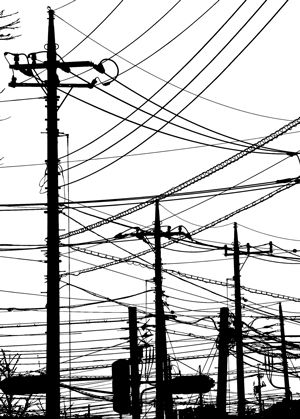Have you been using a T1 line for years, perhaps decades? Yes, they’ve been around that long. At the dawn of the Internet, a T1 line offered business a solid, reliable, high bandwidth connection that made dial-up phone line modems look glacially slow. Nowadays similarly priced bandwidth options make those venerable T1 lines seem equally pokey. So, are T1 lines still a good business solution or in their twilight years?
 The T1 Story
The T1 StoryT1 lines are a product of Bell Labs, which created them to serve the telephone industry. The idea was to replace 24 analog phone lines with two pair that carried a digital multiplex of all the phone calls. There were two advantages, It saved copper wiring and reduced background noise. That was especially true for long distance calls that used analog multiplexing to send multiple calls over a single line. If you remember the switchover from analog to digital toll calls, it seemed almost eerie to no longer hear hiss and garbled conversations during your phone conversations.
T1 lines got a an additional use when they were released to business for Internet access. A protocol conversion interface on each end took care of the translation between synchronized phone channels and Ethernet packets. Businesses only knew they had a highly reliable 1.5 Mbps always-on Internet connection. In the late 1990’s and into the first decade of the 2000’s, that 1.5 Mbps was speedy bandwidth.
A variation of T1 lines, called ISDN PRI, still used T1 for multiple phone lines to corporate PBX phone systems. T1 has been a mainstay of phone and FAX communications for businesses since.
The T1 Twilight Years
Two factors are driving T1 lines into retirement. The first is the need for much higher bandwidths. You might have increased your bandwidth in 1.5 Mbps increments by bonding additional T1 lines to make one larger pipe. There is no economy of scale. Three T1s cost three times the price of one line. It's also hard to get above 10 Mbps with this approach.
Today, we think in terms of hundreds of Mbps and 1 to 100 Gbps as the right level of broadband to support cloud services. That means fiber optic rather than copper based line services. T1 is relegated to smaller business applications such as credit card verification, security alarms, multi-line phone systems and email service. Even so, with the increasing availability of fixed wireless access and fiber optic service, prices on the newer technologies are coming down and T1 isn’t becoming more affordable.
The second factor is the local telephone companies that own the twisted pair copper connections needed to bring in T1 lines. The telcos themselves are switching out copper in favor of fiber and chosing to abandon their copper assets. In some larger cities, copper lines are pulled out of conduits so that fiber cables can take their place.
Even smaller businesses are shunning older telco tech such as DSL and T1 in favor of very low cost broadband and telephone from their Cable providers. The newer DOCSIS modems can support gigabit level broadband delivered over traditional coaxial cable.
Are T1 Lines Still Used?
In some areas T1 lines are still being sold and provisioned. They can be especially valuable in rural areas where fiber, cellular and cable services haven’t yet reached. Some businesses may choose to keep their existing phone systems and FAX machines which are supported by the T1 protocol. A T1 line for these applications and fiber or cable for broadband can make a nice combined solution.
The issue is how long T1 service will still be offered. It’s really a question of time. At some point you may find that new T1 lines can’t be ordered and eventually you may get a letter saying that your T1 service will not be renewed. At that point there is no choice but to move on. Cellular 4G LTE modems designed for business can take over many T1 functions where available. Most companies will be switching to fiber optic connections and cloud based phone and FAX solutions.
What is Best For Your Company?
Business grade fiber optic services are now priced much lower on a per Mbps basis than T1, DS3 and other legacy telco services. Fixed wireless using 4G LTE or 5G can be installed quickly and offer higher bandwidths. Gigabit cable broadband is also a great option for many applications. Find out now what bandwidth services are available for your business location so you can make the best decision for your needs.

